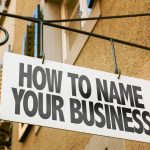How to Value a Small Business for Sale: What You Need to Know
Did you know that you can sell to your employees if you want to exit your small business quickly? This is just one of the many ways you can successfully sell your small business without added stress.
Let’s take a look at how to value a small business for sale.
Know Your Small Business Market Value
You’ll want to have a clear idea of the market value of your small business. There are many variables that factor into this value, including:
- Sturdiness of the foundation
- Financial productivity
- Conflict resolution skills and programs in place
- Options for personal and professional growth
- Licensure options
- Potential for expansion
- Supply and demand
- Interventions to alleviate office drama
These are just a few of the variables that can play into the strength of your small business’ market value. Here are some steps you should take to ensure you have a well-rounded idea of the value of your small business.
Step 1: Organize Your Financial Statements
As a business owner, your strengths probably lie in managing your small business, not in the accounting side of things. So, you might want to hire someone who specializes in the financial aspects of a business.
You’ll want to make sure you take into account:
- Cash flow statement
- Comparision of assets and liabilities
- Business owner’s cash flow
- Your business’ gross revenue, costs and gains for each year in business
Each of these aspects of your affects your business’ market value.
2. Get an Idea of Tangible Assets for Your Small Business
When you tally up your tangible assets, be sure to include all:
- Relevant business equipment
- Office furnishings and fixtures
- Business inventory
Potential buyers will be very interested in your tangible assets. They’ll want to know everything that comes with their purchase of your small business.
3. Draw up Your Statement of Seller’s Discretionary Earnings (SDE)
When you are learning how to value a small business for sale, you won’t want to overlook your SDE statement. This statement is the foundation for your asking price.
Your SDE statement will include your small business’ yearly:
- Revenue
- Cost of sales
- Expenses
- Net income
- Adjustments
This statement will demonstrate the fullest extent of your small business’ earning power. It will be the most important piece of data for your potential buyers.
4. Approximate the Earnings Multiple
You’ll want to convey your small business’ appeal by using a earnings multiple scale. You’ll rate your small business on a scale of 1-4 in the areas of:
- Most current performance
- How easy it will be for a buyer to transition your business into their business
- Products and/or services
- Repeated revenue
- Staffing
- Reputation and brand recognition
- Location
- Clarity of financial data
- Clientele
Your potential buyers will be most interested in how much they will be receiving for their purchase. The more you can offer evidence that this investment will be in their best interest, the more likely they will be to make you an offer.
How to Value a Small Business for Sale
Whether you’re new to small business selling or you’re experienced in the deal, it can never hurt to learn more tips and tricks to make things run smoother.
If you’d like to know more about how to value a small business for sale, check us out today.



